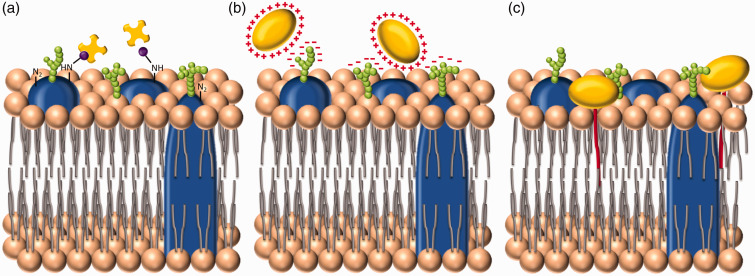Figure 2.
Three broad approaches to cell membrane functionalization. (a) The first method is direct surface chemistry, performed on functional groups present on the cell membrane. Here, for instance, amine groups present on membrane proteins have been biotinylated (purple) to allow the addition of streptavidin (yellow). This approach is commonly used to deliver species labeled with streptavidin or biotin.87 (b) The second method is to increase the cationic surface charge of the exogenous species to facilitate attractive electrostatic interactions with negatively charged moieties present predominantly within the glycocalyx. (c) The third strategy uses hydrophobic interactions between a conjugated lipid tail and the phospholipid bilayer, to anchor the exogenous species to the cell membrane. (A color version of this figure is available in the online journal.)

